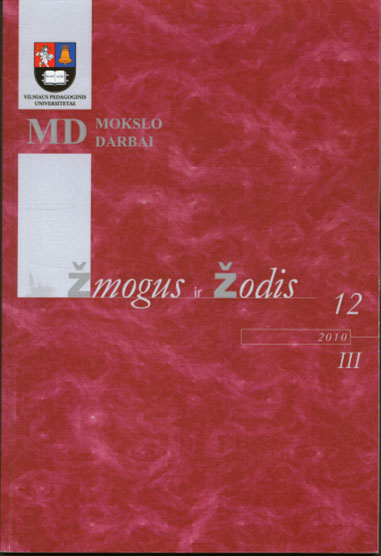Postmodern Eelements of Character Portrayal in Ralph Ellison’s Novel "Invisible Man"
Postmodernistiniai veikėjų paveikslo kūrimo principai Ralpho Ellisono romane „Nematomas žmogus“
Author(s): Gerda MazlaveckienėSubject(s): Foreign languages learning
Published by: Vytauto Didžiojo Universitetas
Keywords: postmodernism; human concept; existential theory; mass society; individual; (in)visibility.
Summary/Abstract: The article focuses on the analysis of character portrayal in Ralph Ellison’s novel Invisible Man (1952) by establishing a connection between the human concept in postmodern literature and the novel. The main features of postmodern society and literature are revealed: the individual’s inauthenticity, vulnerability, alienation, despair and multi–facedness. Though Invisible Man is not really a postmodern experimental piece of art, a number of literary critics consider it as the predecessor of the postmodern novel. The main metaphor of the novel – the hero’s invisibility – is reflected as twofold: the invisibility of an Afro-American in the white America of mid-twentieth century and a human being’s invisibility in the indifferent technological world. Through the analysis of the protagonist’s character portrayal, the article aims at manifesting the idea of the 20th century human alienation and detachment. They are treated as a humble flock of people, subdued by the established norms of the society. Emphasis is laid on the Afro-American’s exploitation by the white part of the society, who is ashamed of his ethnic identity and tries to perform the roles imposed on him by the whites. It is assumed that a human being becomes invisible if he tries to imitate others and create his life according to the imposed models. The article emphasizes the idea that in order to become visible and acknowledged, a person should accept responsibility for their personality’s formation.
Journal: Žmogus ir žodis
- Issue Year: 12/2010
- Issue No: 3
- Page Range: 43-50
- Page Count: 8
- Language: English

